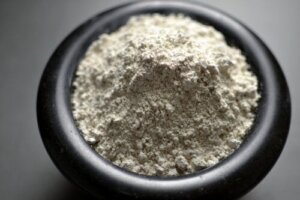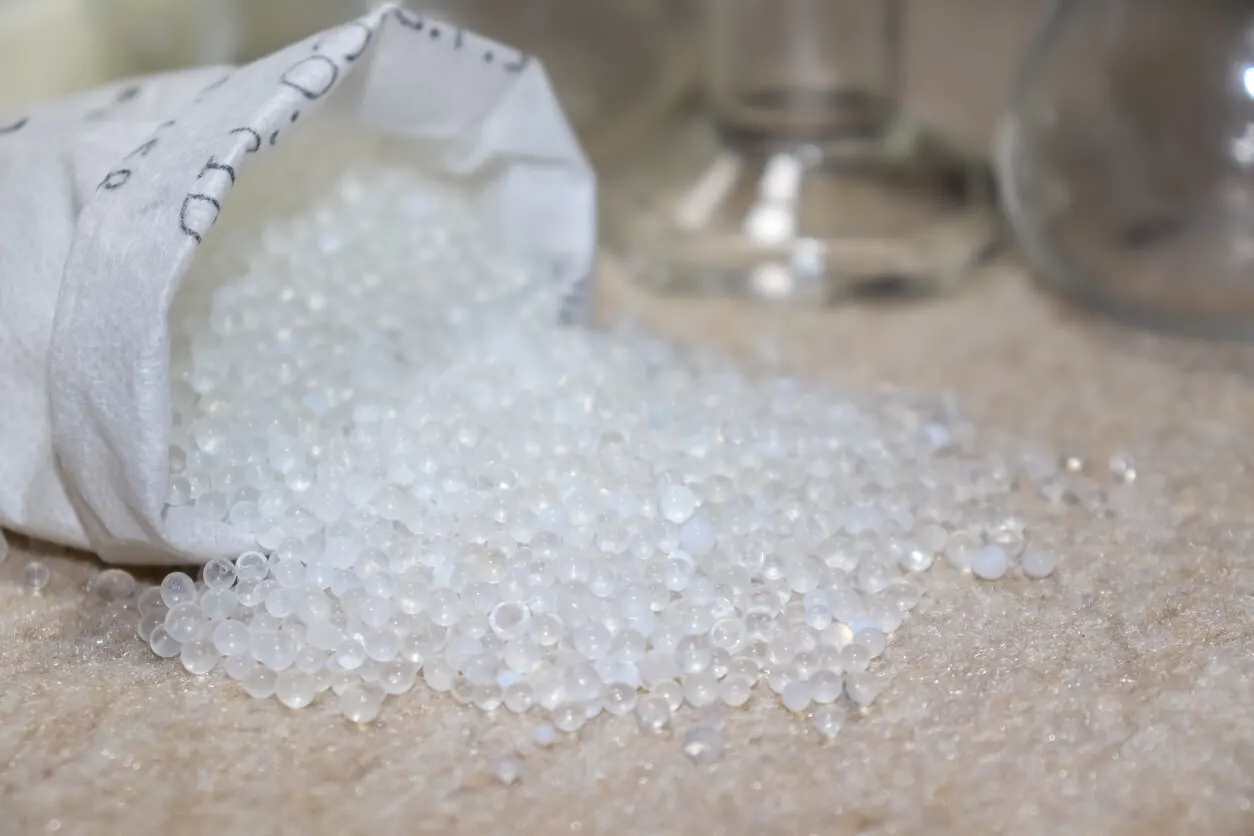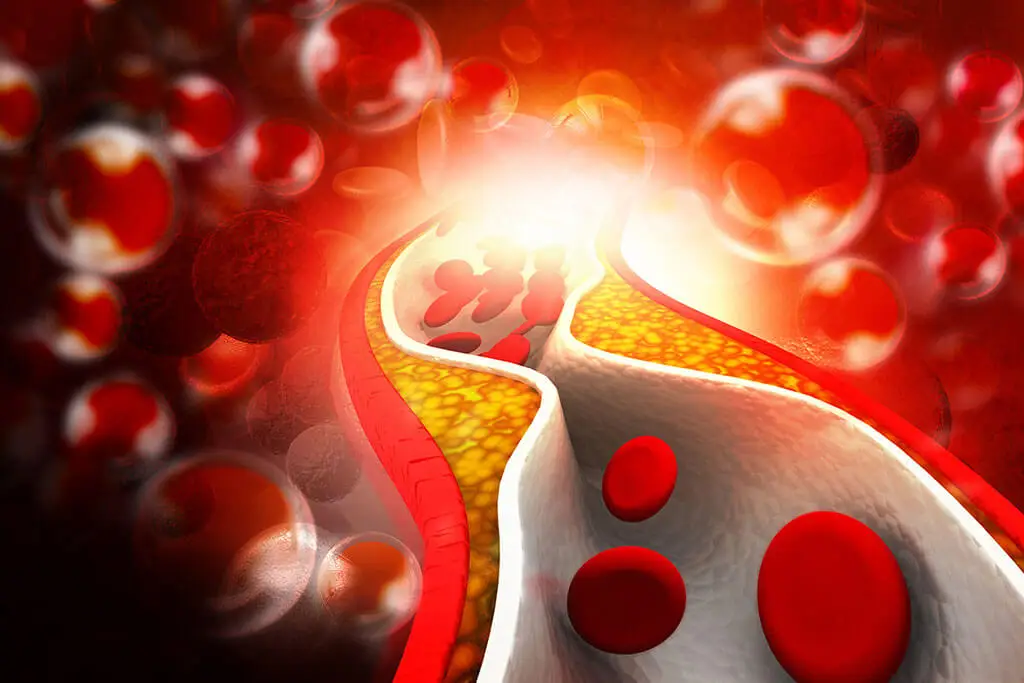Food-Grade Diatomaceous Earth: What's It Used For?

Diatomaceous earth is a powder obtained from the cell walls of microscopic skeletons of algae or aquatic organisms. There’s industrial-grade, and also food-grade diatomaceous earth.
The latter is distributed as a dietary supplement, as it’s believed to help eliminate toxins, heavy metals, and other waste from the body. In addition, it’s linked to better bone and cardiovascular health. Is there any evidence for these benefits, and is it safe to consume? In the following article, we’ll tell you everything you need to know about it.
Food-grade diatomaceous earth
Food-grade diatomaceous earth contains between 0.5% and 2% crystalline silica. This is the characteristic that differentiates it from industrial grade diatomaceous earth, which is composed of more than 60% crystalline silica, an amount that is toxic to humans and animals.
As explained in a review shared in The Journal of Nutrition, Health and Aging, silica is used as a food additive, and specifically as an anti-caking agent. In beverages and products, it allows clarification and viscosity control. It’s also an excipient used in the manufacture of pharmaceuticals and vitamins.
Diatomaceous earth for food use is approved by the Food and Drug Administration (FDA) and the United States Department of Agriculture (USDA).
Currently, this ingredient is available in powder and pressurized liquid form, and used in farms, gardens, buildings, and human and pet food. To be more precise, it’s possible to find the following formats of the product:
- Granulated: Available in powder form, suitable for human consumption, as it has less than 1% crystalline silica.
- Ground or micronized: This is the form usually used in insecticides.
- Calcined: Obtained by heat treatment. It’s used for filtering liquids and explosives. This is the industrial use variety.

What is food-grade diatomaceous earth used for? Potential benefits
Silica – the main active compound in diatomaceous earth – is a key component of human ligaments, cartilage, and muscles. It also plays an important role in plant growth and development.
In addition to this, it is effective as an insecticide. As detailed in research reported in the Asian Pacific Journal of Tropical Biomedicine, the silica in this ingredient causes dehydration of the insect, which facilitates its extermination.
However, as a food supplement, diatomaceous earth is said to provide several health benefits. However, many of these applications come from anecdotal evidence, as no quality clinical trials have been carried out to corroborate its purported effects. So, what would these uses be?
Effects on detoxification of the body
One of the most popular benefits of food-grade diatomaceous earth has to do with detoxification of the body. According to proponents, this supplement can cleanse the digestive tract, optimize liver function, and stimulate the elimination of toxins.
Despite these claims, there’s no conclusive research on the subject. While industrial diatomaceous earth has been found to help remove heavy metals from water, there’s no evidence that the same is true for food-grade diatomaceous earth.
Only one small study in The American Journal of Clinical Nutrition reported that silica may contribute to the removal of heavy metals such as aluminum and, in the process, limit their availability in the gastrointestinal tract. More evidence is needed however.
Effects on bone health
Promoters of diatomaceous earth claim that it’s a good supplement to take care of bone and joint health. They argue this on the silica content, which is a beneficial mineral for bones and connective tissue.
A study shared in The Journal of Nutrition, Health and Aging details that the unoxidized form of silica protects bone health and helps prevent bone density loss. However, the silica in diatomaceous earth isn’t well absorbed, so it’s unlikely to have this benefit.
Effects on cholesterol levels
In a small study reported in the European Journal of Medical Research, participants were supplemented with diatomaceous earth in order to lower cholesterol levels. They took 250 mg of the product, 3 times a day, for 8 weeks.
After this time, the researchers observed benefits. To be more precise, a 13.2% decrease in bad cholesterol or LDL and triglycerides was found. In addition, it was also associated with an increase in good cholesterol or HDL.
Given the age of the study, and the low number of participants, more evidence is required before affirming these effects.

You may be interested in: Does Cocoa Help Lower Cholesterol? This Is What Science Says
Other possible effects of food-grade diatomaceous earth
As a dietary supplement, diatomaceous earth is associated with other possible health effects. However, these are theoretical claims, as they aren’t yet supported by scientific evidence.
Such benefits include the following:
- Supporting the digestive process
- Muscle and joint protection
- Hair growth promotion
- Strengthening skin and nails
- Elimination of lice in children
Formats and dosages of diatomaceous earth
Diatomaceous earth may be included in dietary supplements and medication. It’s also present in skin care and pet nutrition products. It may be found in some kinds of toothpaste, scrubs, foods, and beverages.
Dosage tends to vary. Generally, it ranges from 1.5 to 3 grams per day.
In any case, it’s best to consult the manufacturer’s instructions. Whenever possible, these supplements should be taken under medical supervision.
Read also: Are Strontium Supplements Useful for Osteoporosis?
Product safety and contraindications
Food-grade diatomaceous earth is generally safe. As long as it’s taken moderately, it doesn’t usually pose risks.
However, care should be taken not to inhale the dust. This is due to the risk of silicosis, an inflammation and scarring of the lungs that occurs when inhaling crystalline silica.
Due to the lack of research, this product shouldn’t be used by pregnant or breastfeeding women. Nor should it be used in children or patients with chronic diseases.
What to remember?
Food-grade diatomaceous earth has been linked to beneficial effects on the body, such as detoxification and lowering cholesterol. However, there are no conclusive studies on this subject.
Therefore, these supplements should be used with caution. Under no circumstances should they replace medical treatment.
All cited sources were thoroughly reviewed by our team to ensure their quality, reliability, currency, and validity. The bibliography of this article was considered reliable and of academic or scientific accuracy.
- Martin KR. The chemistry of silica and its potential health benefits. J Nutr Health Aging. 2007 Mar-Apr;11(2):94-7. PMID: 17435951.
-
Hosseini SA, Bazrafkan S, Vatandoost H, Abaei MR, Ahmadi MS, Tavassoli M, Shayeghi M. The insecticidal effect of diatomaceous earth against adults and nymphs of Blattella germanica. Asian Pac J Trop Biomed. 2014 May;4(Suppl 1):S228-32. doi: 10.12980/APJTB.4.2014C1282. PMID: 25183087; PMCID: PMC4025297.
- Danil de Namor AF, El Gamouz A, Frangie S, Martinez V, Valiente L, Webb OA. Turning the volume down on heavy metals using tuned diatomite. A review of diatomite and modified diatomite for the extraction of heavy metals from water. J Hazard Mater. 2012 Nov 30;241-242:14-31. doi: 10.1016/j.jhazmat.2012.09.030. Epub 2012 Sep 24. PMID: 23062514.
- Jugdaohsingh R, Reffitt DM, Oldham C, Day JP, Fifield LK, Thompson RP, Powell JJ. Oligomeric but not monomeric silica prevents aluminum absorption in humans. Am J Clin Nutr. 2000 Apr;71(4):944-9. doi: 10.1093/ajcn/71.4.944. PMID: 10731501.
- Jugdaohsingh R. Silicon and bone health. J Nutr Health Aging. 2007 Mar-Apr;11(2):99-110. PMID: 17435952; PMCID: PMC2658806.
- Wachter H, Lechleitner M, Artner-Dworzak E, Hausen A, Jarosch E, Widner B, Patsch J, Pfeiffer K, Fuchs D. Diatomaceous earth lowers blood cholesterol concentrations. Eur J Med Res. 1998 Apr 8;3(4):211-5. PMID: 9533930.
- Hughes JM, Weill H, Checkoway H, Jones RN, Henry MM, Heyer NJ, Seixas NS, Demers PA. Radiographic evidence of silicosis risk in the diatomaceous earth industry. Am J Respir Crit Care Med. 1998 Sep;158(3):807-14. doi: 10.1164/ajrccm.158.3.9709103. PMID: 9731009.
This text is provided for informational purposes only and does not replace consultation with a professional. If in doubt, consult your specialist.








